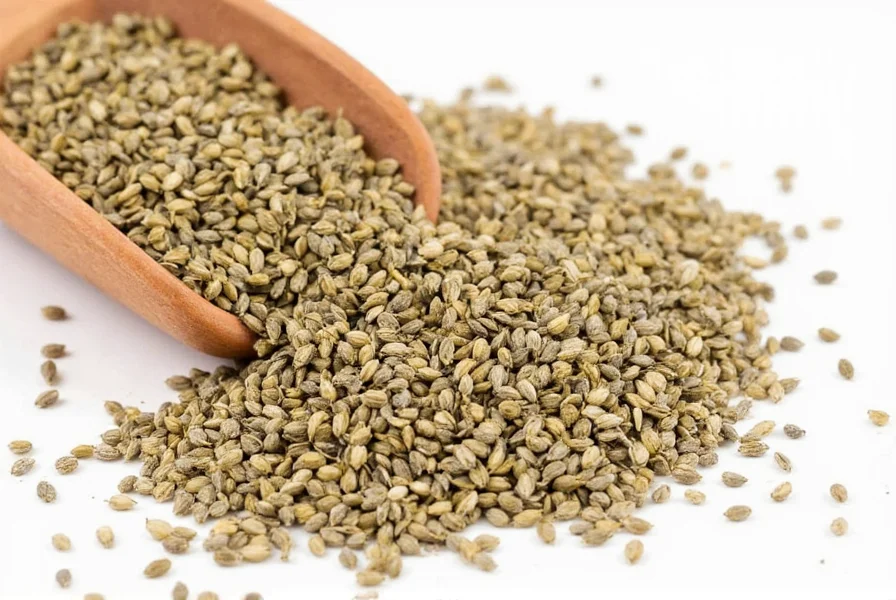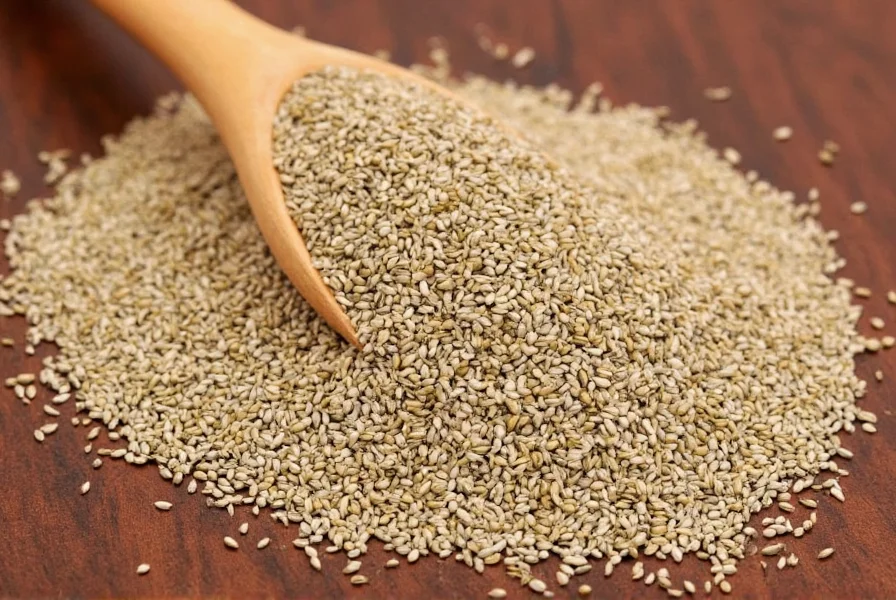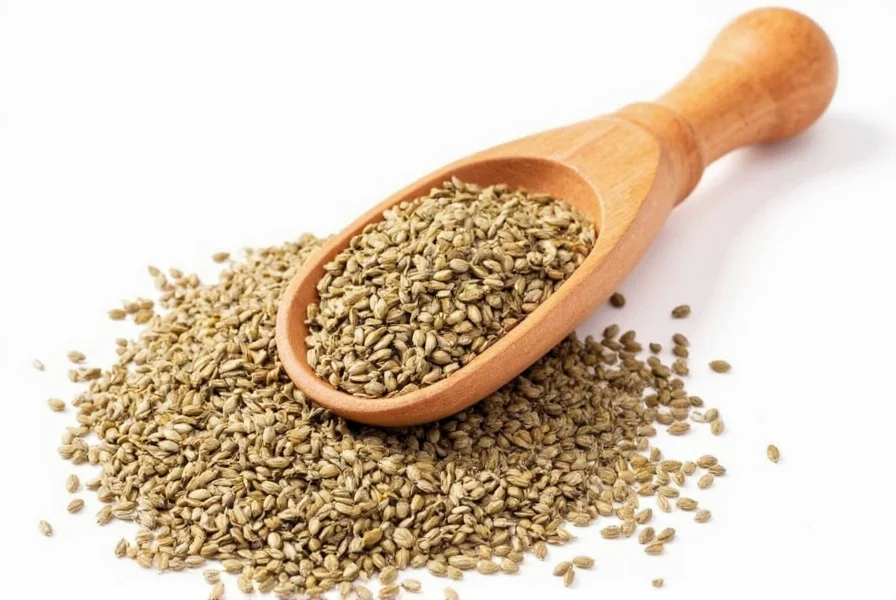Understanding the unique properties of whole coriander seeds transforms your cooking experience. Unlike pre-ground versions, whole seeds preserve their essential oils and complex flavor profile until you're ready to use them. This preservation of volatile compounds makes them indispensable for certain culinary applications where depth of flavor matters most.
What Exactly Are Whole Coriander Seeds?
Despite their name, coriander seeds come from the same plant that produces cilantro leaves. After the cilantro plant flowers, it develops small, round seeds that start green and immature, eventually turning beige to light brown when fully mature and dried. These dried seeds are what we refer to as whole coriander seeds.
Botanically classified as Coriandrum sativum, these seeds measure approximately 3-5mm in diameter and have a characteristic ribbed surface. The seeds contain 0.3-1% essential oil, primarily composed of linalool (60-70%), which gives them their distinctive citrusy aroma. This chemical composition differs significantly from cilantro leaves, explaining why many people who dislike cilantro leaves enjoy coriander seeds.

Whole Coriander Seeds vs. Ground Coriander: Key Differences
The decision between using whole coriander seeds versus ground coriander dramatically impacts your final dish. Understanding these differences helps you make informed choices in your cooking:
| Characteristic | Whole Coriander Seeds | Ground Coriander |
|---|---|---|
| Flavor intensity | Brighter, more complex citrus notes | Muted, earthier flavor profile |
| Shelf life | 9-12 months when properly stored | 3-6 months before significant flavor loss |
| Culinary applications | Tempering, pickling, whole spice blends | Dry rubs, spice mixes, quick additions |
| Flavor release | Gradual infusion during cooking | Immediate flavor contribution |
Professional chefs consistently prefer whole coriander seeds for dishes requiring extended cooking times because the seeds release their flavor compounds gradually, creating more nuanced flavor development. When you grind coriander seeds yourself just before use, you access approximately 30% more essential oils compared to pre-ground versions.
Nutritional Benefits and Scientifically Supported Health Properties
Whole coriander seeds offer impressive nutritional value beyond their culinary applications. A single tablespoon (6g) provides:
- 20% of the daily recommended manganese intake
- 13% of daily iron requirements
- Significant dietary fiber (2g per tablespoon)
- Antioxidants including terpenes and flavonoids
Research published in the Journal of Ethnopharmacology confirms that coriander seeds demonstrate notable antioxidant activity, with whole seeds showing 25% higher antioxidant capacity than ground versions due to better preservation of phenolic compounds. Additional studies indicate potential benefits for blood sugar regulation and cholesterol management when consumed regularly as part of a balanced diet.
Optimal Culinary Applications for Whole Coriander Seeds
Certain cooking techniques specifically benefit from using whole coriander seeds rather than their ground counterpart:
Tempering Technique (Tadka)
In Indian cuisine, tempering whole spices in hot oil or ghee releases their essential oils without burning. Add whole coriander seeds to heated oil for 30-60 seconds until they become fragrant but don't darken. This technique maximizes flavor extraction while preserving delicate aromatic compounds.
Pickling and Brining
Whole coriander seeds maintain their structure during the pickling process, gradually releasing flavor into vinegar-based solutions. Their texture withstands the acidic environment better than ground coriander, which would become muddy and lose definition.
Slow-Cooked Dishes
For stews, braises, and curries with cooking times exceeding 30 minutes, whole coriander seeds provide sustained flavor release. Add them during the early stages of cooking to allow sufficient time for flavor infusion without becoming bitter.

Proper Storage Methods for Maximum Freshness
The shelf life of whole coriander seeds depends entirely on storage conditions. Follow these evidence-based recommendations:
- Air-tight containers: Use glass jars with rubber seals to prevent oxygen exposure
- Dark environment: Store in opaque containers or dark cabinets away from light
- Cool temperatures: Ideal storage temperature is below 70°F (21°C)
- Freezer option: For long-term storage (beyond 6 months), freeze in vacuum-sealed bags
A 2022 study in the International Journal of Food Science demonstrated that whole coriander seeds stored in the freezer maintained 92% of their essential oil content after one year, compared to just 63% when stored at room temperature. Always label containers with purchase dates to track freshness.
Mastering the Art of Toasting and Grinding Whole Coriander Seeds
Freshly ground coriander makes a dramatic difference in flavor intensity. Follow this professional technique:
- Use a dry skillet over medium-low heat
- Add whole coriander seeds in a single layer
- Toast for 2-3 minutes, shaking the pan frequently
- Remove from heat when seeds become fragrant and slightly darker
- Cool completely before grinding
For optimal grinding results, use a dedicated spice grinder or mortar and pestle. Never use a coffee grinder for spices unless it's exclusively for this purpose, as residual coffee oils will contaminate your spices. Grind just before use to maximize flavor impact in your dishes.
Substitution Guidelines: When and How to Switch Between Forms
Understanding proper substitution ratios prevents recipe failures. Use this conversion guide:
- Whole to ground: 1 teaspoon whole seeds = ¾ teaspoon freshly ground coriander
- Ground to whole: 1 teaspoon ground coriander = 1¼ teaspoons whole seeds (toasted and ground)
Important note: Substitutions work best when you grind the seeds yourself immediately before use. Pre-ground coriander lacks the volatile compounds that make freshly ground versions superior. For dishes requiring whole seeds (like pickling brines), avoid substituting ground coriander as it will create a cloudy, muddy texture.
Signature Dishes Featuring Whole Coriander Seeds
Certain culinary traditions showcase whole coriander seeds to maximum effect:
Indian Cuisine
Whole coriander seeds form the foundation of many curry blends and are essential in dishes like:
- Dal tadka (lentil soup with tempered spices)
- Garam masala (when freshly ground)
- Pickled vegetables (achar)
Middle Eastern Cooking
Used in combination with other whole spices for:
- Dukkah (nut and spice blend)
- Preserved lemons
- Lamb and beef kofta
European Baking
Surprisingly common in traditional breads:
- Rye breads (especially Scandinavian varieties)
- Christmas baking spice blends
- Beer brewing (in certain traditional recipes)
Frequently Asked Questions
Can I substitute whole coriander seeds for ground coriander in recipes?
Yes, but with important considerations. Use a 1:¾ ratio (1 teaspoon whole seeds = ¾ teaspoon ground). For best results, toast and grind the seeds yourself just before use. Note that some recipes specifically require whole seeds (like pickling brines) where substitution isn't recommended.
How long do whole coriander seeds stay fresh?
Properly stored in an airtight container away from light and heat, whole coriander seeds maintain optimal flavor for 9-12 months. Research shows freezer storage extends freshness to 18-24 months while preserving 90%+ of essential oils. Always check for fragrance before use - stale seeds lose their citrus aroma.
Why toast whole coriander seeds before grinding?
Toasting whole coriander seeds enhances their flavor profile by activating Maillard reactions and releasing volatile aromatic compounds. The process transforms their flavor from grassy to warm, nutty, and citrusy. Proper toasting (2-3 minutes over medium-low heat) increases essential oil availability by approximately 40% compared to using raw seeds.
Are whole coriander seeds and cilantro the same plant?
Yes, whole coriander seeds come from the same plant (Coriandrum sativum) that produces cilantro leaves. The seeds develop after the plant flowers. Despite coming from the same plant, the seeds and leaves have completely different flavor profiles due to varying chemical compositions - seeds contain linalool while leaves contain aldehydes that create the 'soapy' taste some people detect.
What's the best way to store whole coriander seeds long-term?
For maximum shelf life, store whole coriander seeds in an airtight glass container in the freezer. Research shows this method preserves 92% of essential oils after one year, compared to 63% at room temperature. Always label containers with purchase dates and allow seeds to reach room temperature before opening to prevent condensation.











 浙公网安备
33010002000092号
浙公网安备
33010002000092号 浙B2-20120091-4
浙B2-20120091-4